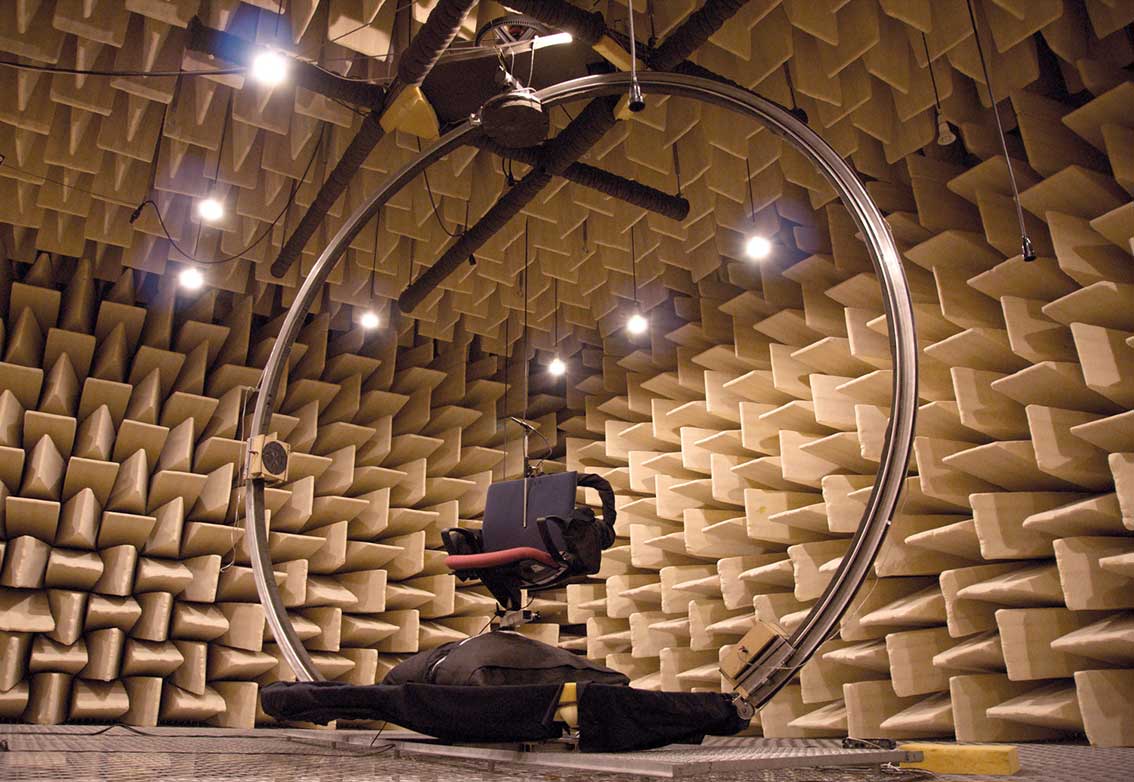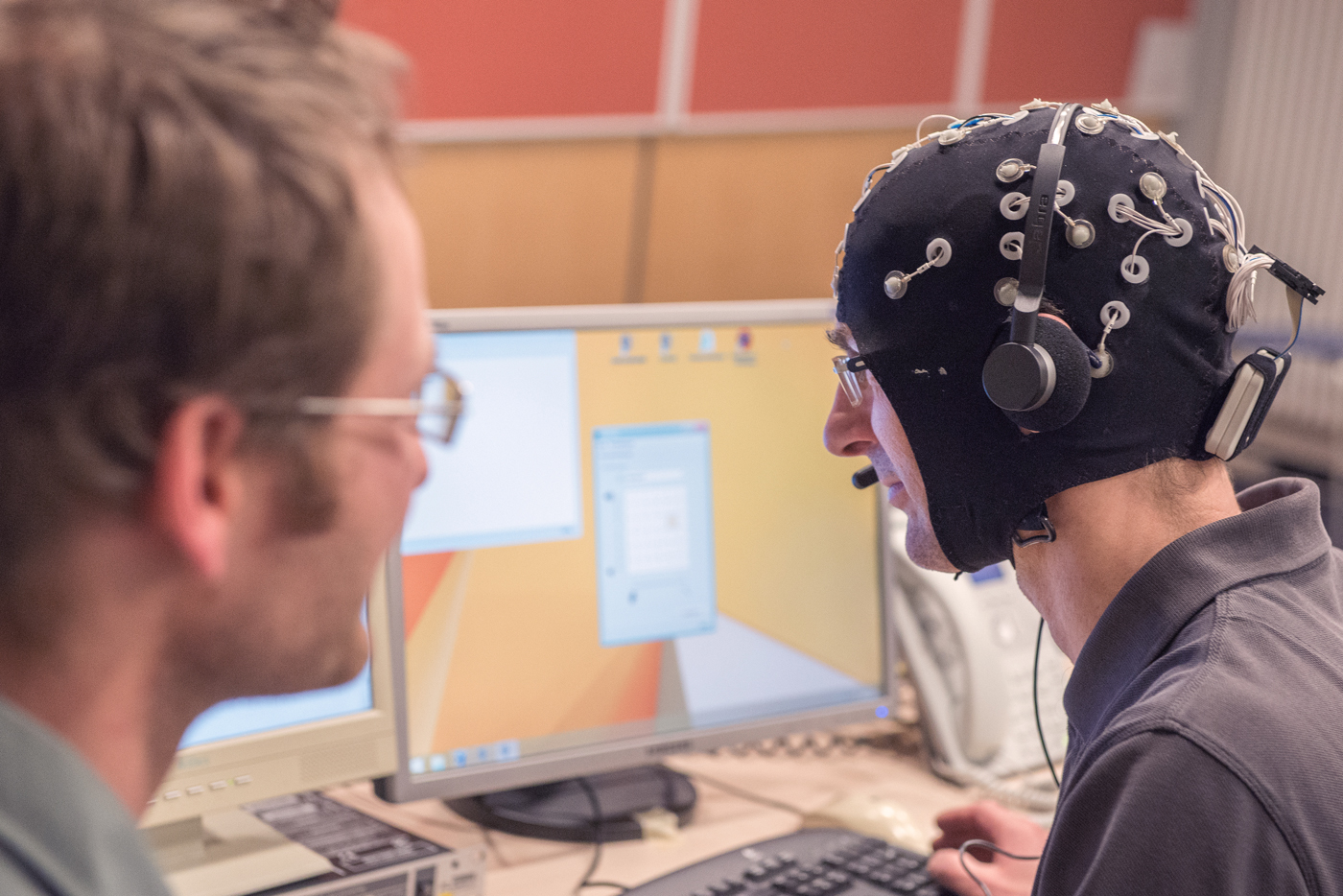Audio Lab
The audio laboratory of the Oldenburg Branch for Hearing, Speech and Audio Technology HSA offers many opportunities in the field of testing and developing audio products. The focus is on compact loudspeaker and microphone systems as well as voice-controlled devices. The facility offers standard living room acoustics for testing products under everyday conditions, such as at the end customer's home. This is particularly important for speech recognition systems.
If required, larger, more reverberant rooms can be realistically simulated using artificial, electro-acoustic reverberation. In addition, there is an anechoic cabin (internal dimensions LxWxH 220x14x230cm) for measurements in which the room influence should be as low as possible, such as for the acoustic characterization of microphones or loudspeakers.
- Electroacoustic measurements on microphones, loudspeakers and audio products
- Frequency response (electrical/acoustic)
- Noise (electrical/acoustic)
- Maximum sound pressure; power handling after distortion, electrical and mechanical destruction
- Loudspeaker parameters: Linear (e.g. TSP), non-linear (various distortions)
- Dispersion characteristics
- Digital microphones: I2S, PDMT
- Speech recognition systems (FAR, FRR) according to standard and customer-specific test setups
- Structure-borne sound measurement via acceleration measurement or 1D laser
- Audio recordings
 Fraunhofer Institute for Digital Media Technology IDMT
Fraunhofer Institute for Digital Media Technology IDMT











